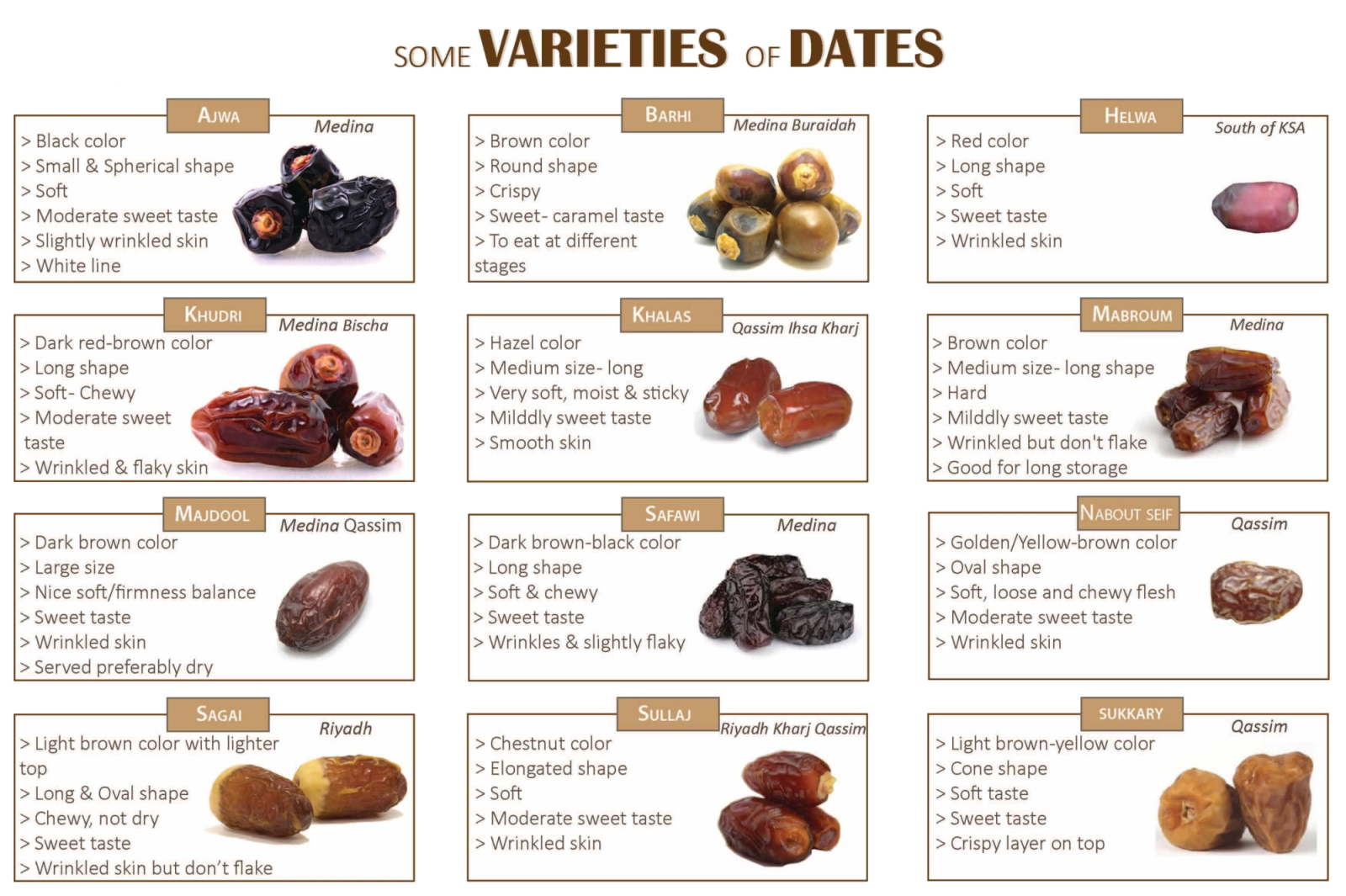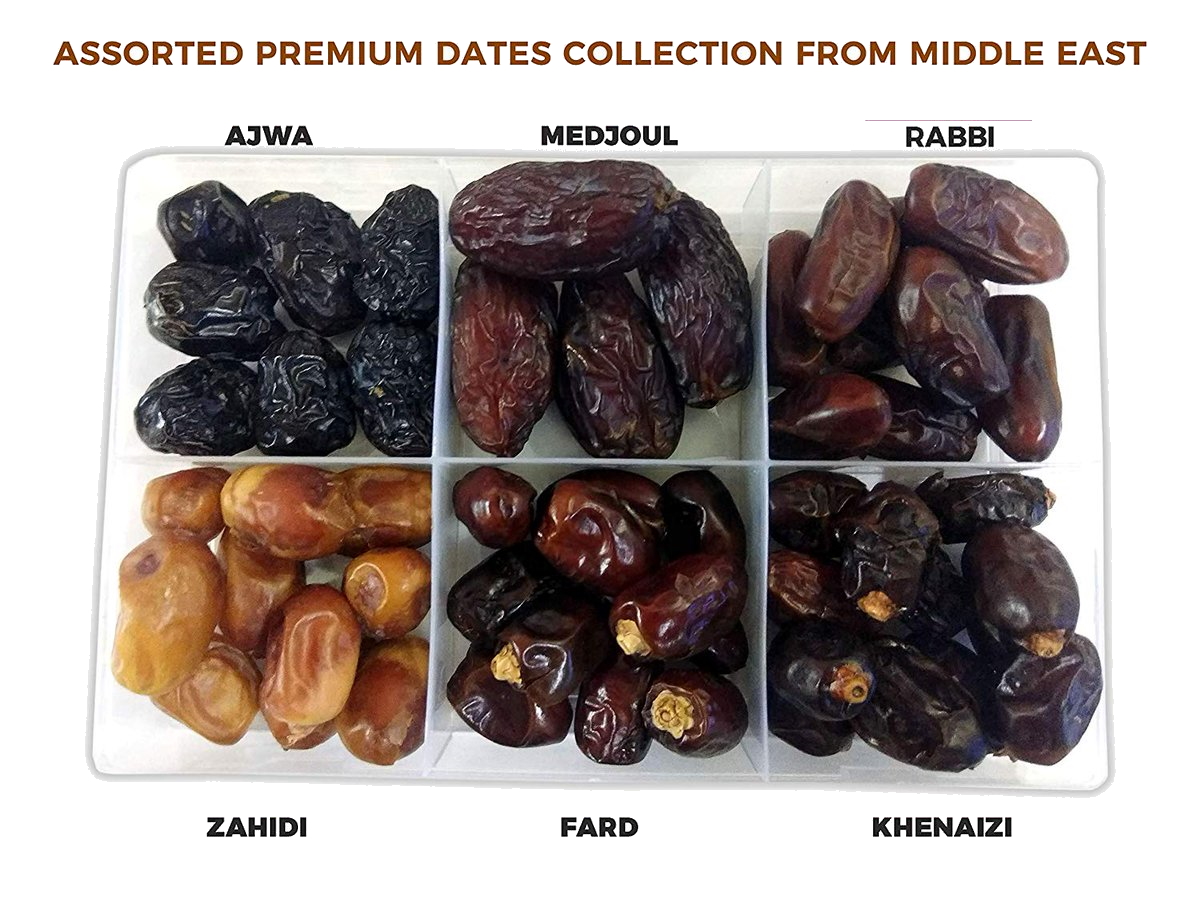Barhi Dates

This type of date is yellow and crunchy. This ripe date tastes like caramel and brown sugar. Like most dates, it is sweet, and well worth a try. These creamy dates are really delicious and are often sold while still on thin twigs. You can store these seasonal dates in the freezer for months. This date is originally rooted in the groves of Iraq. However, due to its unique taste and quality, it has many fans among Iranian palm growers and consumers.
Barhi dates are among the most desirable international trade cultivars whose main origin is Abadan-Khorramshahr regions in Iran.
This cultivar is one of the (soft) cultivars and its fruit shape is spherical, which can be consumed in all three stages of slicing, rotab and dates, but most of it is consumed in rotab.
Iranian Barhi dates are much better and more desirable than dates of this cultivar in other countries bordering the Persian Gulf.
Barhi dates are both fleshy, delicate and very tasty and delicious

Description/Taste
Barhi dates are small fruits, averaging 2 to 4 centimeters in length and 2 to 3 centimeters in diameter, and have a round to oval shape with curved, blunt ends, sometimes found with a piece of the stem still attached. When young and semi-ripe, Barhi dates are golden yellow and have a smooth, taut, and firm surface with a crunchy, fibrous consistency. As the fruits fully ripen, the yellow hue will transition into an amber, dark brown tone, while the surface creases, wrinkles, and gives to pressure. The flesh will also soften, developing a smooth, creamy, moist, and slightly chewy texture, encasing a central, inedible stone. Barhi dates have a light astringency mixed with fruity-sweet notes of cinnamon, coconut, and sugarcane when semi-ripe. As the fruit matures, the flavor will deepen into sweet, buttery, and fruity nuances with butterscotch, honey, and persimmon overtones.
Seasons/Availability
Barhi dates are available for a short season in the fall.
Current Facts
Barhi dates, botanically classified as Phoenix dactylifera, are a rare variety belonging to the Arecaceae family. The small fruits form in bunches on date palms native to Iraq and are a part of the soft date subgroup. The name Barhi is derived from the Arabic word barh, meaning “hot wind,” a descriptor given for the hot winds that were present in the date’s native lands that helped to ripen the fruits. Barhi dates, also known as Barhee dates, are highly favored for their unique ability to be consumed throughout the date’s three stages of ripeness: semi-ripe, or khalal, fully ripe, rutab, and dried and wrinkled, known as tamr. The variety is also valued for its creamy, smooth consistency and caramel flavor. Barhi dates are not commercially cultivated on a large scale as their season is short, and it is difficult to transport the delicate dates once ripe. The dates are considered a rare delicacy and are mainly appreciated fresh in their semi-ripe and mature stages.
Nutritional Value
Barhi dates are an excellent source of fiber to stimulate the digestive tract and are rich in potassium to balance fluid levels within the body. The dates are also a good source of copper to maintain a healthy nervous system, magnesium to regulate blood pressure, manganese to promote the development of connective tissue, and contain lower amounts of vitamin B6, iron, and vitamin C.
Applications
Barhi dates are a versatile variety as they can be consumed in all three stages of date maturity, including khalal, semi-ripe, rutab, meaning fully ripe, and tamr, its dried and wrinkled stage. In the khalal stage, Barhi dates are primarily eaten out-of-hand as a crunchy snack or tossed into salads. As the date ripens into its rutab stage, the flesh softens and develops a creamy consistency, well-suited for fruit platters and salads, sliced over ice cream, or incorporated into oatmeal or buttermilk for a rich breakfast. Barhi dates can also be blended into smoothies and milkshakes, cut in half and covered in peanut butter, or stuffed into cored apples and baked as a dessert. The sticky, chewy flesh compliments savory rice and meat dishes, but it also acts as a natural sweetener in syrups, pastes, sauces, spreads, and even wine. Barhi dates are highly favored for their rich butterscotch flavor and are commonly incorporated into muffins, cookies, cakes, puddings, bars, and bread. During Ramadan, a time of fasting to grow closer to God in the Muslim religion, dates are the first food consumed to break all-day fasting. Barhi dates pair well with fruits such as oranges, bananas, coconuts, and apricots, cinnamon, maple syrup, nuts such as pecans, almonds, and walnuts, and cheeses such as goat, fromage, and cheddar. Khalal Barhi dates should be stored at room temperature to ripen fully. It is important to note that good air circulation is necessary to mature dates, and placing the dates on a wire rack will provide even ripening. Once ripe, the dates will keep for a couple of days at room temperature, or they can be stored in the refrigerator for two weeks. Barhi dates can also be frozen for extended use.
Ethnic/Cultural Info
Outside of the Middle East and Northern Africa, Barhi dates are primarily cultivated in the Coachella Valley, a region in California known for its arid climate and uniform heat levels between day and night. One of the valley’s unique features was the discovery of an abundant source of fresh underground water, spurring an agricultural boom to grow plant varieties that thrived in hot, dry climates. In the early 1900s, the Coachella Valley was selected by the United States Department of Agriculture as an official test site for date production. The first date palms were imported from Algeria and were mainly the deglet noor variety. In 1913, American buyer Henry Simon traveled into the Algerian Sahara and acquired 6,000 palm offshoots that were shipped to California for planting in the Coachella Valley. With Simon’s import success, many new varieties of date palms were brought to the valley between 1913 and 1922, quickly establishing the region as the date capital of the United States. As the date groves in the Coachella Valley continued to expand, word across the United States had spread of the exotic fruits, attracting curious visitors. The date groves soon became a popular tourist attraction, encouraging farmers to construct informational centers to educate visitors on date production and sell date commodities. In addition to the centers, an International Festival of Dates was established in 1921 in Indio to celebrate the beloved fruit. The date festival has been held annually for over 74 years, and it eventually was combined with the Riverside County Fair, attracting thousands of visitors each spring. During the festival, fresh dates, including Barhi dates, are sold alongside date-infused baked goods, shakes, and savory main dishes, and there are also camel rides, the retelling of traditional Arabic stories, Arabian dance performances to honor the cultural origins of the dates. In the present-day, the Coachella Valley produces approximately 95 percent of the dates sold in the United States.
Geography/History
Dates are considered one of the oldest cultivated fruits in the world and are native to the Middle East and North Africa, specifically the Fertile Crescent region between Mesopotamia and Egypt. Palm offshoots were spread along trade routes in ancient times and were readily planted across North Africa into Morocco and also from the Middle East into the Indus Valley, where dates became a staple source of nutrition for civilizations. Dates continued to travel along trade routes and were eventually introduced to Spain. From Spain, date palms were brought to the New World, planted in Mexico and California in 1765, and were also naturalized in regions of Asia. Barhi dates are native to Iraq and were introduced to the United States in 1913 by agricultural explorer Paul Popenoe. Popenoe’s father owned a nursery in Altadena, California, and sent Paul and his brother Wilson to collect date palms for the nursery in 1911. The Popenoe brothers gathered 9,000 palm offshoots from Southern Iraq and Baghdad, including the Barhi date, and planted them in California. Barhi dates were initially an overlooked variety, but over time, they became a favored culinary ingredient for their butterscotch flavor and melting, soft flesh. Today Barhi dates have remained a somewhat rare variety in the United States, grown in California and home gardens in Texas and Arizona. The variety is only available for a short season and is primarily sold through farmer’s markets, select online retailers, and specialty grocers. Barhi dates are also grown worldwide and can be found in Mexico, Africa, the Middle East, India, and other parts of Asia.
